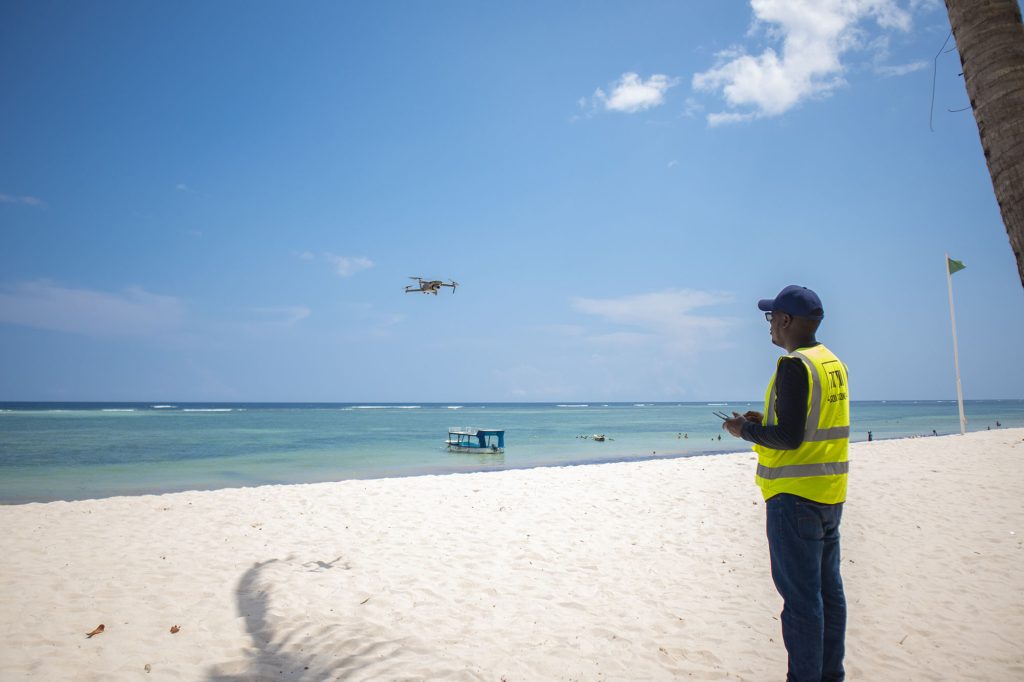Guide to Drone photography on Safari
14 Aug 2025 | Brian Babu

A safari in Africa is the trip of a lifetime — vast golden plains, acacia-dotted horizons, and wildlife encounters you’ll never forget. For nature lovers, photographers, and adventure seekers, it’s a chance to immerse yourself in the wild like nowhere else on Earth.
If you’re passionate about photography, the idea of bringing a drone to capture sweeping aerial shots of elephants on the move or a sunrise over the savanna might sound irresistible. But before you pack your gear, it’s important to know the realities of drone use on safari — from what’s legally allowed to how to fly responsibly without disturbing wildlife.
This guide walks you through the dos, don’ts, and practical tips for drone photography on safari, so you can make informed choices and avoid costly mistakes.
Are Drones Allowed in Kenya?
Yes, but with strict conditions. Importing and operating a drone in Kenya is regulated by the Kenya Civil Aviation Authority (KCAA). You’ll need to follow specific steps for registration, licensing, and permits before you can legally fly.
For a detailed breakdown of the process — including import approvals, licensing, and insurance — check out our complete guide here:
Are Drones Allowed in National Parks?
Here’s where it gets tricky. In most African countries, including Kenya, drones are not allowed in national parks and wildlife reserves without special authorization. This is to protect wildlife and preserve the natural, tranquil atmosphere for visitors.
That said, it is possible to get permission — but you’ll need to secure permits from both KCAA and the Kenya Wildlife Service (KWS). These applications can take weeks (sometimes months) to process and approval isn’t guaranteed.
Key Rules for Drone Use in National Parks
- Permit Required: Written authorization from both KCAA and KWS.
- Restricted Zones: No flying over core wildlife habitats or nesting areas.
- Height Limit: Typically capped at 400 feet (120 metres).
- Licensed Operator Only: You must hold a valid drone pilot license recognized by KCAA.
- Penalties for Violations: Hefty fines, drone confiscation, and possible legal action.
Many private conservancies have their own rules — some may allow drones under strict supervision, while others follow the same bans as national parks. Always check with your lodge or safari operator before your trip.
Why Are Drones Banned on Most Safaris?
The restrictions aren’t just red tape. They’re in place for two main reasons:
- Wildlife Protection – Animals can be easily stressed or disturbed by drones. An elephant might trumpet and charge, a bird might abandon its nest, or a predator could be distracted from a hunt — all due to the unfamiliar buzzing overhead.
- Visitor Experience – Safaris are about the peace and stillness of nature. A drone can shatter that atmosphere for everyone in earshot. Imagine quietly watching a lion stalk through the grass… and then hearing bzzzzz overhead.
Planning a Drone-Friendly Safari
If you’re set on using a drone, here’s how to do it legally and respectfully:
- Choose the Right Location: Look for private game reserves or conservancies that permit drone use.
- Apply Early: Start the KCAA and KWS permit process well before your trip — expect several weeks’ lead time.
- Respect Wildlife: Keep your distance. Never chase or hover directly above animals.
- Limit Flight Time: Fly in short bursts to minimize noise impact.
- Coordinate with Your Guide: They can help identify safe, approved spots and times to fly.
- Check the Weather: Strong winds, dust, and sudden rain are common in the bush and can quickly ground your drone.
Tips for Capturing Great Safari Drone Shots
Golden Hour Magic: Fly early in the morning or late afternoon for the best light and dramatic shadows.
Use ND Filters: These help balance exposure in bright African sunlight.
Go Wide: Wide-angle shots showcase the vastness of the savanna.
Include Scale: Position your drone to capture wildlife against sweeping landscapes for perspective.
Stay Ready: Wildlife moves fast — have your drone powered, connected, and ready to launch when opportunities arise (in permitted areas).
The Takeaway
Drone photography on safari can produce breathtaking results — but only if it’s done legally, ethically, and with respect for the environment. For most national parks, the safest approach is to leave the drone behind and focus on ground-based photography. Guides know the best vantage points and can help you capture stunning images without risking fines or disturbing wildlife.
If you do secure the proper permissions, follow all regulations to ensure your flights are safe and unobtrusive.
At ARQI Solutions, we specialize in drone operations, imports, and compliance support — making it easier for photographers, filmmakers, and travelers to fly legally in Kenya. Whether you’re planning a safari or a commercial shoot, we handle the logistics so you can focus on the adventure.
📩 Contact us to learn more about how we can help with your next drone project in Kenya.